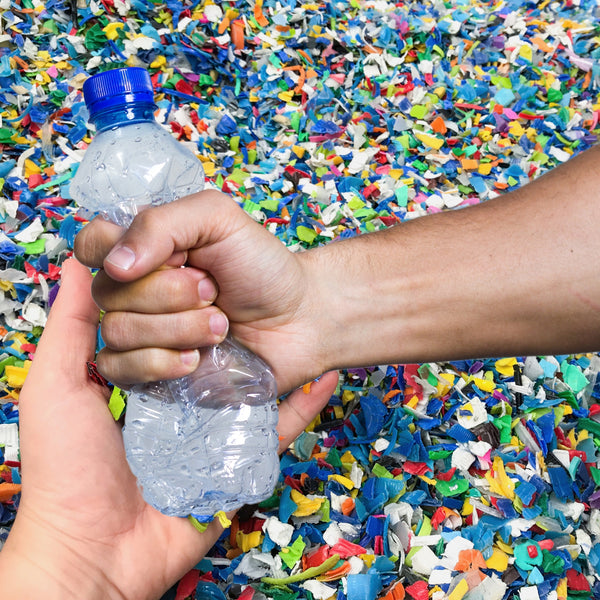Driving Change: Discover Australia's Recycling Innovations and Success Stories for 2024

As 2024 draws to a close, it's heartening to reflect on the numerous positive strides Australia has made in the world of recycling and sustainability. Across the country, communities, businesses, and governments are coming together to create a cleaner, greener future. Here are some of the most inspiring recycling stories and developments from Australia this December.
1. Innovative Waste-to-Energy Projects in Queensland
One of the most exciting initiatives making waves this December is Queensland’s growing investment in waste-to-energy (WTE) technology. The Queensland government has recently approved plans for new WTE plants, which will use non-recyclable waste to generate energy. These projects are designed to not only reduce landfill waste but also provide clean, renewable energy to power thousands of homes.
The success of the WTE plant at the Swanbank site, near Ipswich, which began operations earlier this year, has shown that converting waste into energy is a viable and efficient solution. The next phase will expand on this success, with even more capacity to process waste and divert it from landfills, significantly reducing Australia's carbon footprint.
2. Australia’s First National Plastic Recycling Scheme
A major development in Australian recycling this year has been the launch of the nation’s first large-scale plastic recycling initiative, the National Plastics Recycling Scheme. Spearheaded by a collaboration between major industry players, including Coca-Cola, Nestlé, and major retailers, this initiative aims to reduce plastic waste while boosting Australia’s recycling rates.
By providing accessible recycling drop-off points and improving the recycling process, the scheme focuses on increasing the collection of plastic bottles and packaging, ensuring they are reused or remade into new products. The scheme has already rolled out successfully in several states, with positive feedback from both businesses and consumers.
3. Recycling Innovation in Fashion
The fashion industry in Australia is also seeing a revolution in recycling. Several Australian brands are leading the way in sustainable fashion by using recycled materials in their designs. Brands like Amity Blue, Remedy Clothing and Sustainably Yours are using upcycled textiles, including fabrics from old clothes and discarded plastic bottles, to create stylish, eco-friendly clothing.
4. Rise of Community Recycling Programs
Across Australia, community-based recycling programs are proving to be an effective way to engage citizens in sustainability efforts. Local councils have rolled out programs designed to collect e-waste, batteries, and textiles, which are often discarded improperly and end up in landfills.
In Victoria, for example, the e-waste drop-off scheme has grown in popularity, with more than 250,000 kilograms of old electronics being safely recycled since the start of the year. Local councils are also providing education about correct recycling practices, ensuring that residents know what can be recycled and how to do so responsibly.
5. The Success of Container Deposit Schemes
Container deposit schemes have seen incredible success in Australia, with numerous states reporting a surge in bottle returns this December. These schemes allow consumers to return empty drink containers for a refund, which helps prevent bottles and cans from ending up in landfill or the ocean.
In New South Wales, the scheme has been so successful that it is now estimated to recycle over 2.5 billion containers annually. The initiative has significantly boosted recycling rates, and the revenue generated by the return of containers is reinvested in further recycling infrastructure.
6. Advancements in Construction Waste Recycling
Construction and demolition waste is a significant contributor to landfill in Australia, but recent innovations in this sector are changing the narrative. Companies are increasingly turning construction and demolition waste into valuable materials, with recycled concrete, bricks, and timber being reused for new builds.
In Sydney, Recycled Materials Australia has developed a process to turn old concrete into high-quality aggregate, reducing the need for virgin materials. This method not only saves energy but also reduces the environmental impact of new construction projects. These advancements are leading to a more sustainable construction industry, where materials that would have been discarded are now being given a second life.
7. Collaborative Efforts in Agriculture: The Recycled Plastics Initiative
Another notable recycling story comes from the agricultural sector. Australian farmers are embracing the idea of recycling agricultural plastics, such as silage wrap and irrigation tubing, which have traditionally been challenging to recycle.
The Agrecovery program, now operating across Australia, provides a collection service for agricultural plastics, ensuring they are cleaned, processed, and recycled into new products. This initiative not only helps reduce the environmental footprint of the farming industry but also gives farmers the opportunity to take part in responsible waste management practices.
8. Plastic-Free Christmas Campaigns
As Christmas approaches, many Australians are focusing on reducing waste during the holiday season. Retailers across the country are joining the movement by promoting plastic-free gift wrapping, encouraging customers to use recyclable or reusable wrapping materials.
The Plastic-Free Christmas campaign, organized by environmental groups like Clean Up Australia, is encouraging consumers to rethink their shopping habits by opting for more sustainable products, from packaging to decorations. Several Australian brands are offering zero-waste alternatives, from compostable decorations to sustainable gifts, providing environmentally conscious consumers with more choices.
Australia’s recycling efforts have definitely made progress throughout 2024.
As we approach 2025, the hope is that these positive trends will only continue to grow, with more Australians embracing eco-friendly practices and supporting initiatives that benefit both the environment and the economy. The future looks bright for recycling in Australia, and together, we can continue to make a positive impact on the planet.












